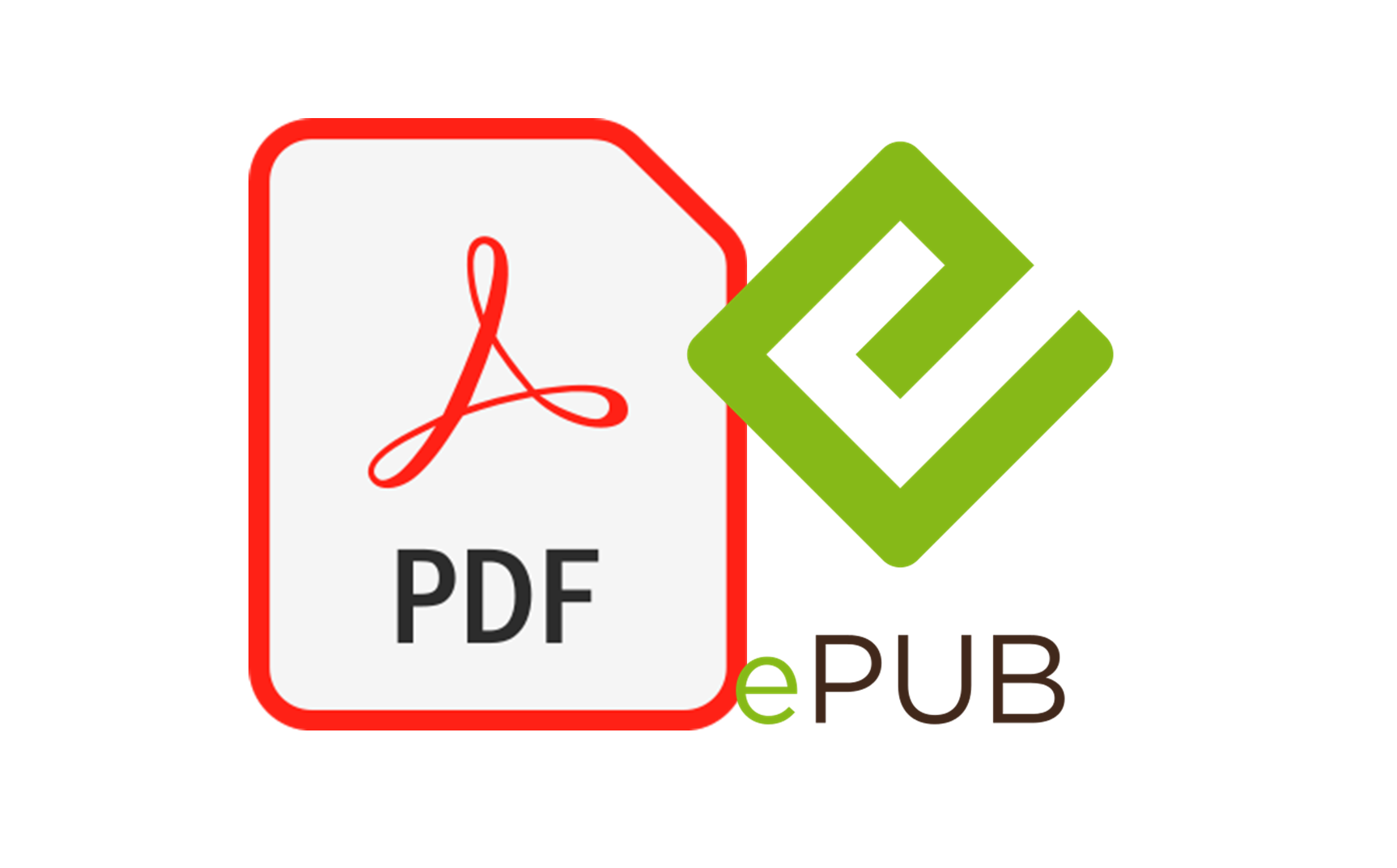Are you struggling to choose your ebook format? The popularity of ebooks continues to skyrocket, and the technology behind them is constantly evolving. From new DRM solutions to a proliferation of tools for indie authors, the markets introduces new advances every day. In this constantly changing environment, publishers and authors are faced with many different choices in how they deliver their content to readers, what tools they use to write and self-publish, and how the content is viewed.
eBook Format Choices
One of the biggest questions that arises is about which format to use - EPUB or PDF. Although there are many ebook formats on the market now, these two formats are the most popular open formats currently used. There are reasons to choose each, with EPUB being the standard and PDF selected for specific types of publications.
PDF eBook Format
PDF documents are fixed layout documents, where the layout and positioning of elements contained within the ebook are fixed independent of the viewing medium. A PDF document will look pretty much the same on whatever device we view it on, whether it's a desktop computer, tablet device, or mobile phone. The design of the document remains exactly the same as the writer creates it using a PDF tool or converting to a PDF from Word or another creation tool.
EPUB eBook Format
EPUB files support reflowing. In essence, this means that EPUB documents dynamically adapt to the viewing medium to maximize compatibility across platforms. The logic behind EPUB files is based on the same foundation as web pages. You can think of the dynamic behavior similar to what happens when you resize your browser window. For example, if you resize the window looking at this blog post, you can adjust how large the font is, how many words appear in each line, and how big your viewing area is.
EPUB vs PDF
Of course, the differences between PDF and EPUB don't end with static vs dynamic.
Font
EPUB files allow the reader to change the font family and font size on the fly, again because it is based on web technology and layout changes occur dynamically. While modern PDF files also offer some of this capability, the fixed format is still it's strongest feature, so when the font size is increased, it can wreak havoc with the rest of the design.
Rich Media
Both formats allow rich media to be included. However, when using PDF, the file must be opened using specific PDF readers, so readers are first required to download software that will allow the PDF to play the video, where EPUB does not.
DRM
Both formats support Adobe DRM and other digital rights management tools. Therefore, you can protect your content and control the access rights to it using both formats if you choose to do so.
Why Indie Authors Choose PDF
If it is important that your content is delivered exactly as you designed it, then PDF is the best choice. For example, if you are publishing a cookbook with recipes and images, would it disrupt the design were it to be dynamic? What about a children's book with illustrations? One of the most common fixed format designs that makes PDF the better choice is technical manuals, where there are specifically labeled graphics that must remain in place to accurately depict the information being shared.
Book Baby explains:
Fixed format is ideal for books that require the text and images to appear in a specific and consistent way. The term “fixed” means that your book will look the same across all devices because the flexibility of the reflowable eBook has been removed. In other words, the text and pictures are “fixed” to a specific spot on the page and will closely match your print book/PDF. The reader is not able to change the size and type of font or layout of the screen.This type of eBook is best for children’s books that contain text placed over top of images, as well as books where pages are cross-referenced, such as cookbooks, graphic novels, textbooks and technical manuals, and photography books.
Most eBooks Are Best Formatted as EPUB Files
Unless you fit the parameters that require a fixed format, you'll find it easier to use EPUB. Almost every publisher and distribution service (including Amazon) accept EPUB. It is the gold standard for self-publishing because it is accessible to so many readers on so many different devices.
Ultimately, unless you have a reason to do so, we don't recommend PDF format. PDF format serves a purpose for specific types of publishing. The people who read those ebooks are more likely to accept the format. But it is far more cumbersome for the average reader, especially when there are multimedia additions to the ebook.
For more guidance in formatting your ebooks, read Formatting Your eBook for Digital and Print in the EditionGuard resource library.



